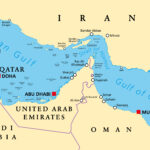Predicting the weather in general and hurricanes in particular can be a very imprecise science, Max Mayfield, director of the Tropical Prediction Center/National Hurricane Center in Miami told more than 500 Windstorm Insurance Network Conference attendees in Tampa.
During his Thursday morning keynote presentation “What a Year! A Review of the 2004 Hurricane Season,” Mayfield explained that while hurricane prediction technology and computer modeling techniques have improved, in two or three years new technology promises to make predictions a lot more precise. He said that the accuracy of recent predictions has improved 50 percent, but that new advances will soon make them even more precise.
Mayfield said that a newly passed Hurricane Bill will provide the National Hurricane Center with new hurricane hunting aircraft and enable it to modernize its equipment.
When a meteorologist applies two or three different models to a hurricane each program is likely to predict two or three different paths, according to the veteran hurricane tracker. He predicted that in two or three years this procedure will become more reliable.
“Don’t focus on that skinny black line,” would be a good mottoe for my tombstone, Mayfield said, emphasizing that the black line predicting a hurricane’s path can vary immensely, and that the path of destruction can extend for 50 or 100 miles around the center of a hurricane. He said that during the four 2004 hurricanes, it was lucky that the eye of the storms were relatively small, confining major damage to a smaller area.
When Hurricane Charley hit Port Charlotte if the prediction had varied by 15 degrees it would have hit Tampa instead of further south and there would have been major devastation. “But you don’t need a direct hit to cause major damage,” Mayfield cautioned. He described the Hurricane Center’s forecasts for Charley as “very accurate.”
Mayfield showed detailed presentations of the paths followed by each of the four hurricanes and before and after pictures damage done in the hardest-hit areas. He said updated building codes made a big difference in how badly structures were damaged, displaying photos of buildings in one neighborhood in which an older house was demolished and one built according to the new building codes only had only minor damage.
His goal is to change the outcome in the aftermath of hurricanes to eliminate deaths and damages. He stressed that while there are deaths and injuries during hurricanes, a lot occur in the aftermath of the hurricane when victims are cleaning up. He said many of the deaths are related to the cleanup, stress and in some cases even when despondent victims commit suicide.
Mayfield said it was impossible to foresee what the 2005 hurricane season holds. He said that when the hurricane season begins in June there isn’t even any way to predict when the first hurricane will occur. He emphasized everyone to make advance preparation for such hurricanes and said valuable information is presented every year about how to get ready for the hurricane season every March during the annual “Hurricane Preparedness Week.”
“We have encountered more hurricanes in the last 10 years than in the 70s, 80s and 90s,” Mayfield concluded. “In 1995 the Atlantic Ocean warmed up and we had lots of hurricane activity after that. Who knows what the future holds, we could have active hurricane seasons for the next 10 or 20 years.
Congressman Jim Davis D-Tampa, will speak to the conference Friday morning at 8:30 a.m. Davis, elected to Congress in 1996, brought a wealth of legislative experience and a common sense approach to the House of Representatives and quickly earned praise as “a moderate lawmaker of unimpeachable character, an unpretentious man his colleagues naturally look to for leadership.”
Was this article valuable?
Here are more articles you may enjoy.


 Fannie and Freddie Hit Pause on Replacement-Value Requirements for Home Insurance
Fannie and Freddie Hit Pause on Replacement-Value Requirements for Home Insurance  Update: Fannie Mae Guidelines Raise Concerns, Could Bar ACV Coverage for Homes
Update: Fannie Mae Guidelines Raise Concerns, Could Bar ACV Coverage for Homes  Liberty Mutual Posts $1.5B Net Income for Q1, Reversing Loss
Liberty Mutual Posts $1.5B Net Income for Q1, Reversing Loss  Three Insurers Reject Chevron’s $57 Million Claim for Iran Oil Seizure
Three Insurers Reject Chevron’s $57 Million Claim for Iran Oil Seizure 

